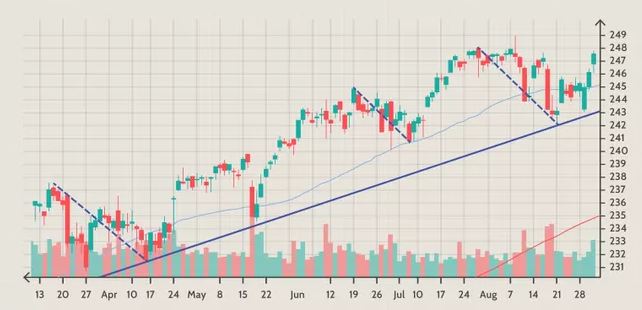Forex successfully requires both proven trading strategies, trading plans, and a solid risk management plan. The seven steps below will show you how to develop and test your forex trading strategy, no matter how experienced.
Understanding technical analysis
The purpose of technical analysis is to analyze market direction using price charts and indicators. It would help if you used technical analysis to identify your trading positions’ potential entry and exit points.
Technical analysis focuses on markets and prices rather than fundamental analysis. Meanwhile, fundamental analysis determines what drives market prices. Analyses can take place either independently or jointly using these two methods.

Traditionally, technical analysis has focused on timing and price patterns, which is why it serves as a neutral analysis. Technical analysis of the current market price and possible target levels can help you identify forex trading opportunities based on technical analysis.
Technical analysis aims to calculate the possibilities of different market movements while not guaranteeing the outcome.
Importance of technical analysis
A trader’s primary approach to determining market direction is technical analysis. There is some degree of randomness to market movements. An emerging pattern is likely to be noticed by many other people.
There is something almost self-fulfilling about the trend. This means that traders are responsible for creating market patterns.
Understanding fundamental analysis
It was explained in the previous sections that technical analysis revolves primarily around trends and price movement. The fundamental analysis gives a holistic picture of their strengths and weaknesses by assessing markets holistically.
A currency analyst analyzes key events that may influence its strength or weakness during a fundamental analysis. Data on politics, economics, and natural disasters are among them.
In short, a fundamental analyst gauges the strength of a currency by using all available information. Economic reports and statistics are analyzed, including GDP and unemployment numbers, production data, and interest rate announcements.
Fundamental factors that affect forex prices
Natural Disaster
A currency’s fundamentals suffer greatly during a natural disaster, such as a hurricane, tsunami, or flooding. In 2010, Japan suffered from a tsunami that was a good example. This caused significant disruptions to the country’s manufacturing sector and the mobile technology and auto industries.
International trade
The demand for a country’s currency increases when the demand for its products and services increases.
Economic output and growth
The country’s GDP largely determines economic growth. It provides information on the country’s economic performance and strength by summarizing the production of goods and services.
Inflation
There are two main indicators of this factor:
Consumer Price Index: This measures the change in the average consumer cost of goods and services.
Producer Price Index – A measure of changes in the cost of producing goods and services.
Choosing your entry and exit points
There are risks associated with trading forex, regardless of the approach taken. You need to understand price action to determine when to enter and exit trades.
Support & resistance: Support and resistance refer to important trading levels where the price has been able to bounce back several times. Essentially, they are the points in the supply chain where demand meets supply.
Breakouts: Breakthroughs through established support or resistance levels are known as breakouts. There is strength in breakouts, especially when other indicators accompany them.
Managing the trading risk
The risks involved in forex trading are well known to you by now. The risk of investing in the stock market increases with the potential gain. Keeping risk under control can be achieved by following these tips.
Avoid over-trading
It is recommended not to risk more than 2% of your trading account balance per trade on volatile markets. Trading more increases your chances of suffering losses that are difficult to recover.

Test your trading strategy
Trading with demo money does not simulate the risks involved in real-life trading, but it can provide you with information about the soundness of your investment strategy. Before you can confidently invest your hard-earned money in a new strategy, it must undergo testing and error.


